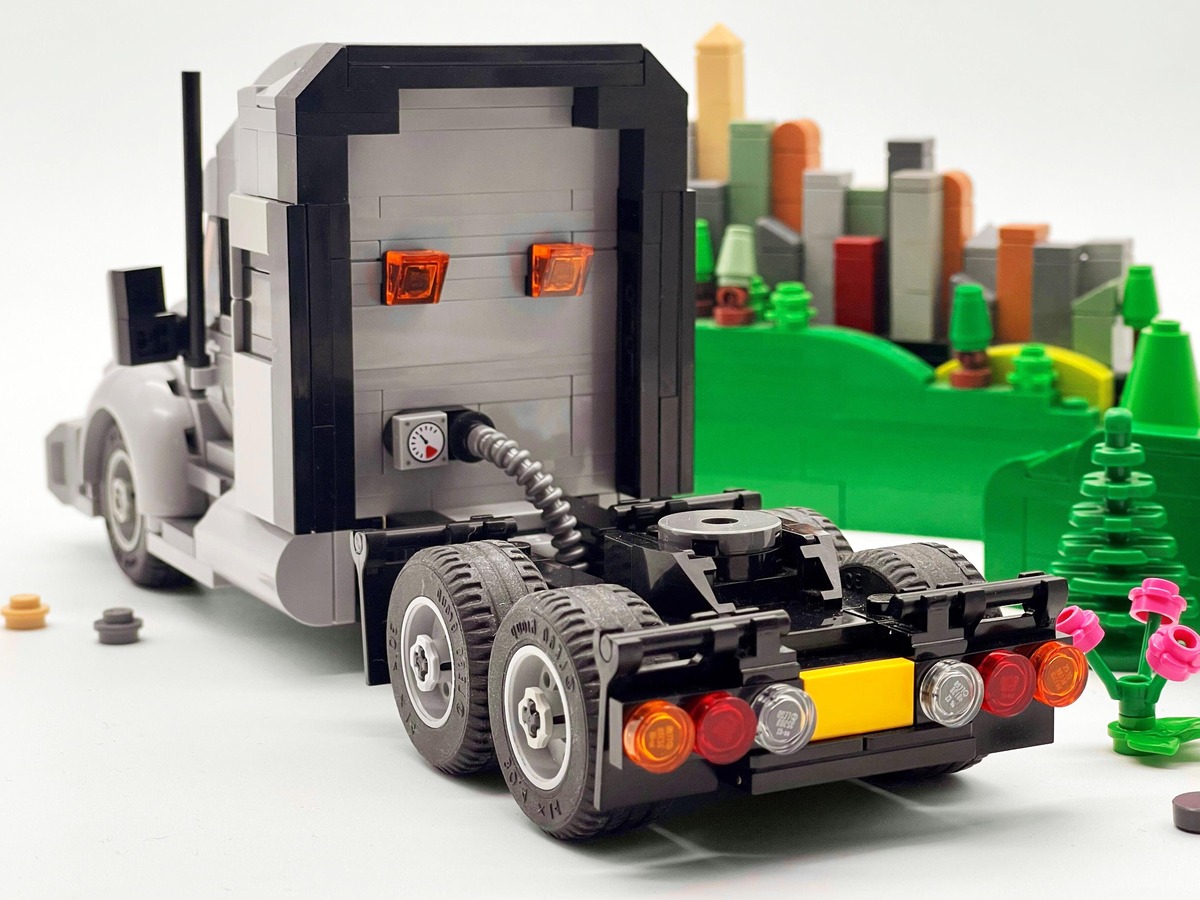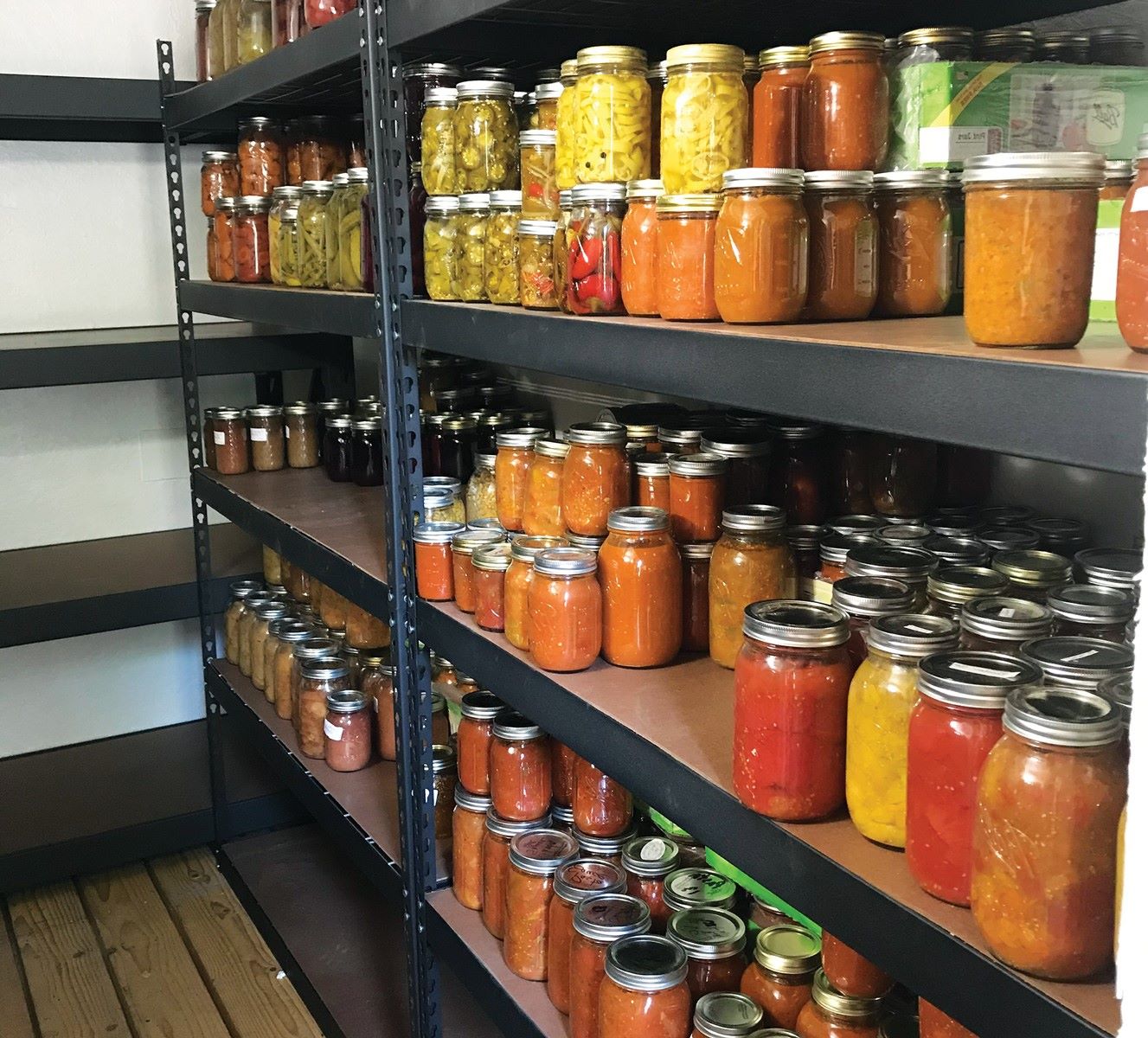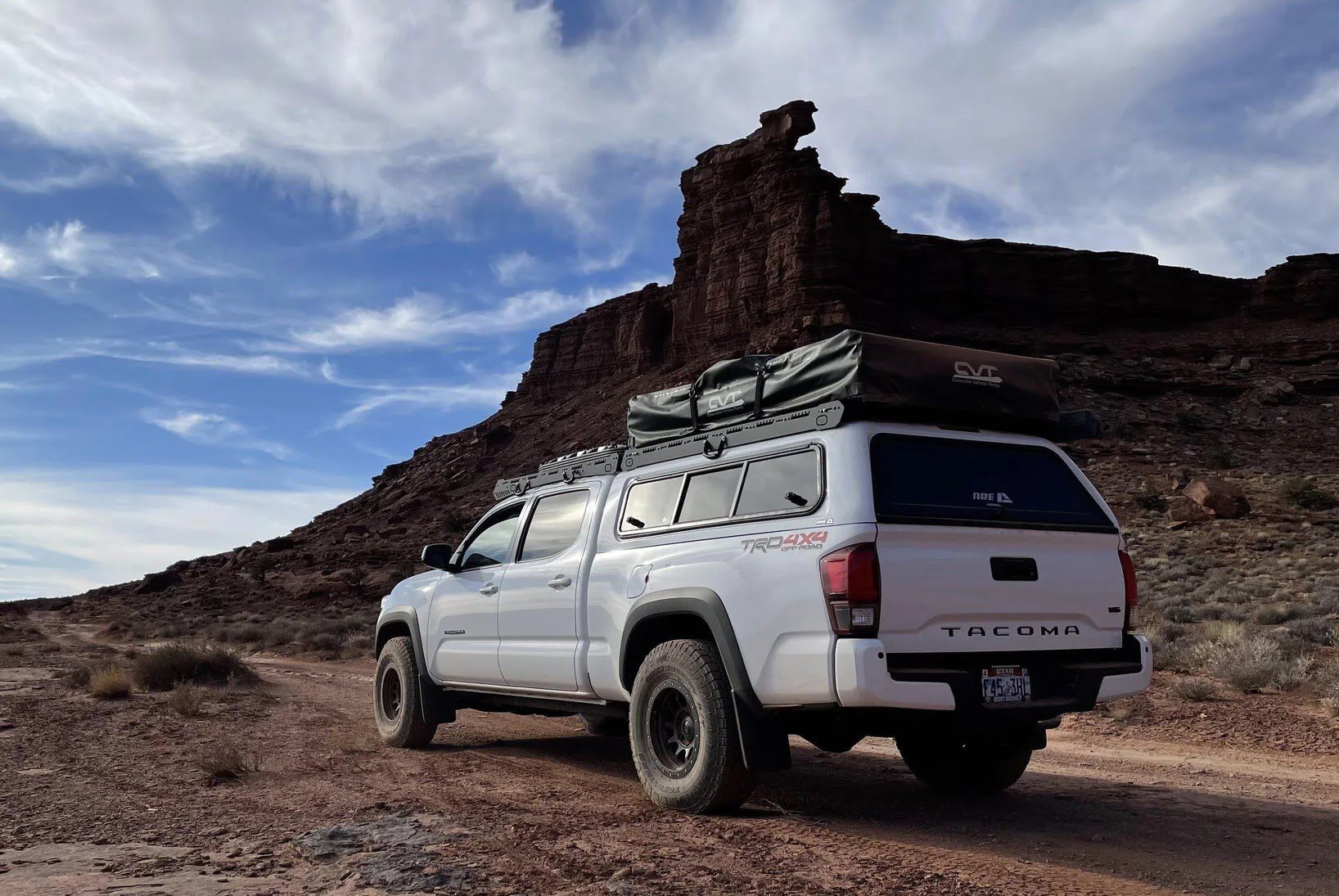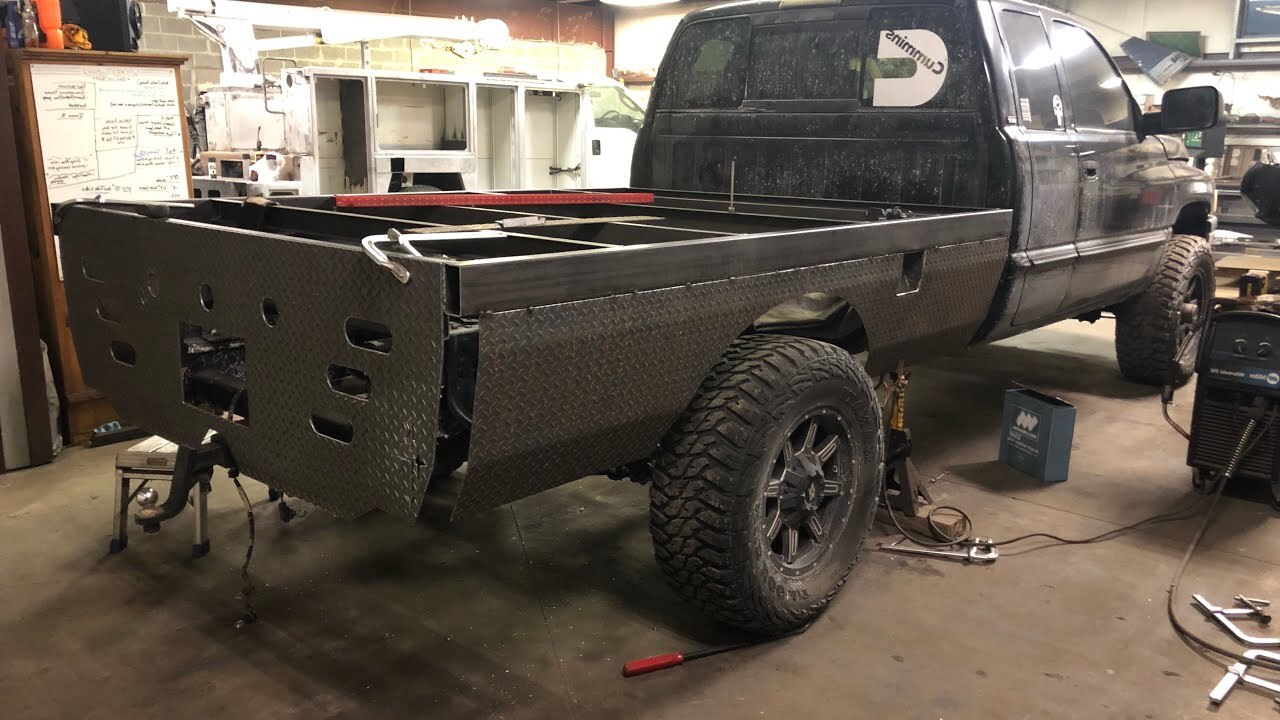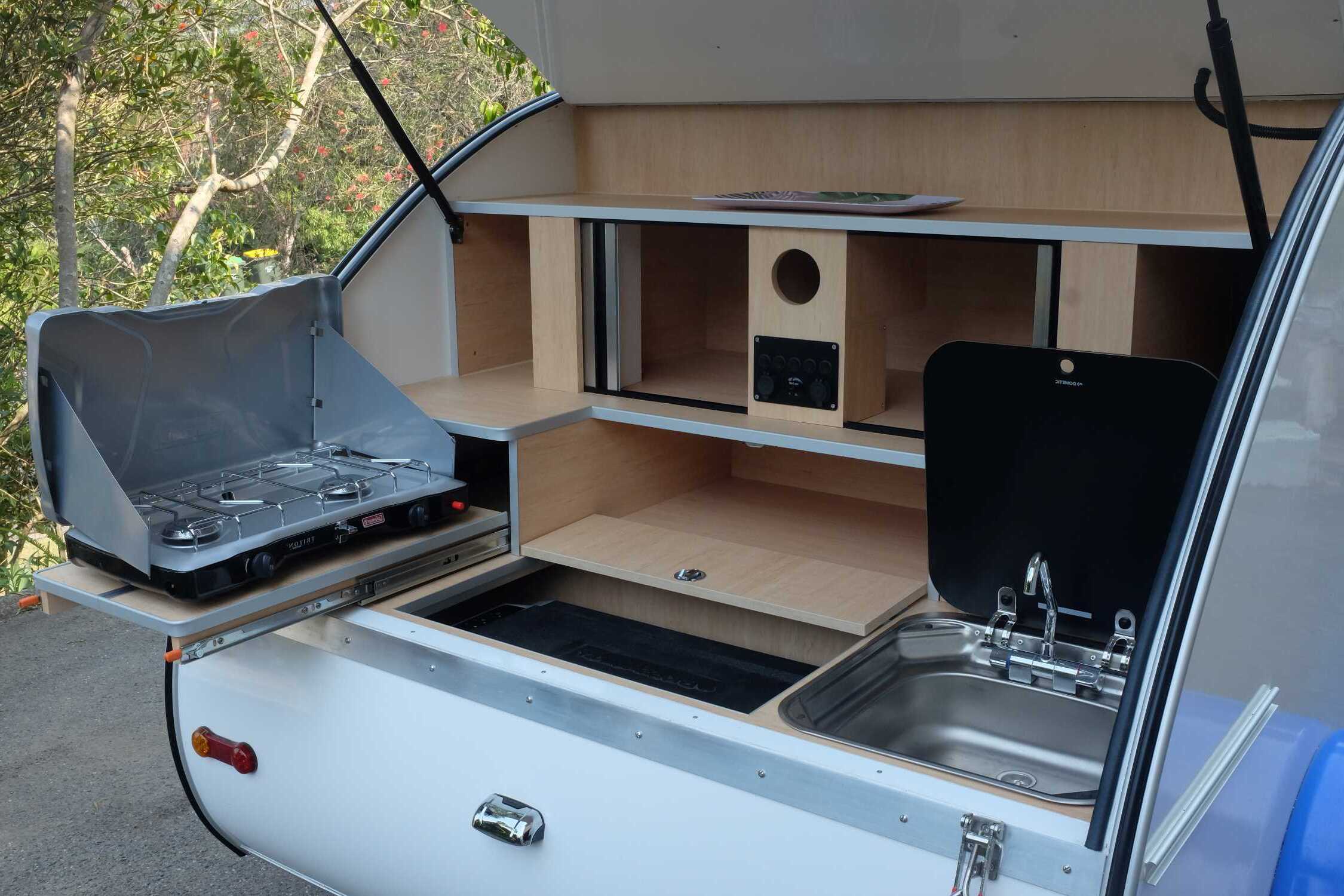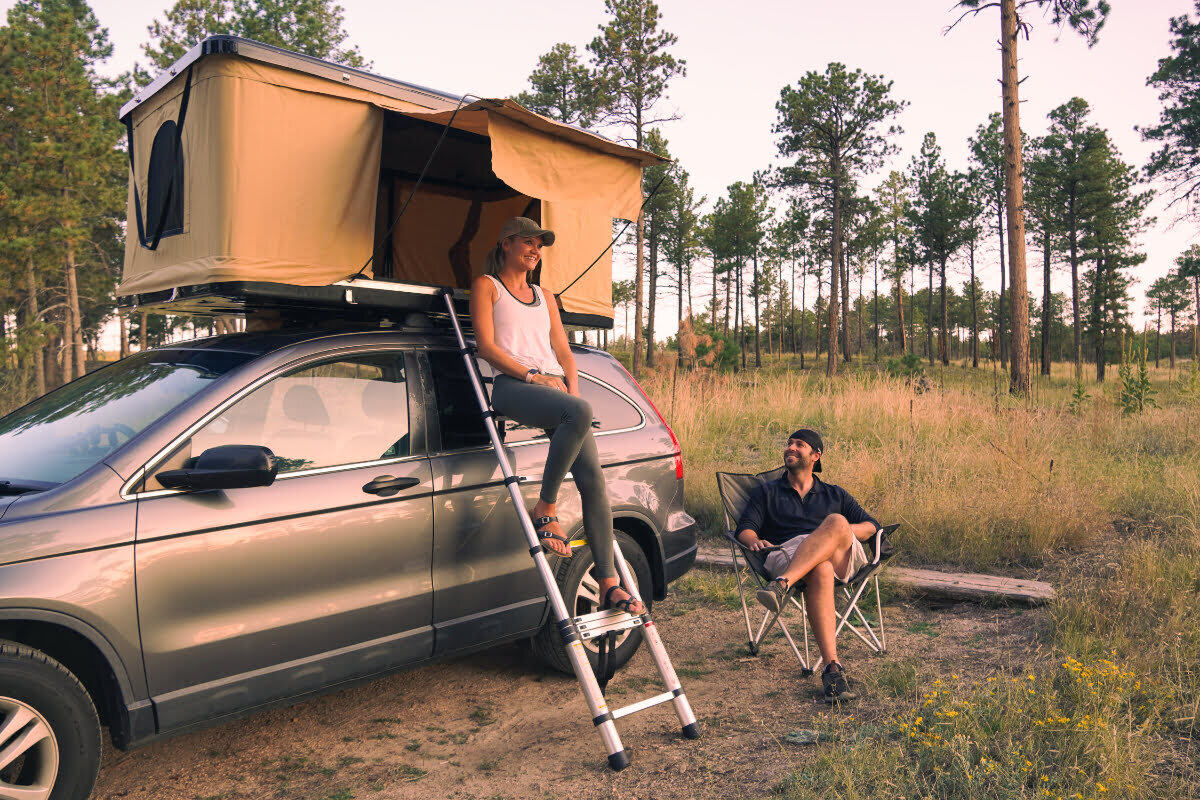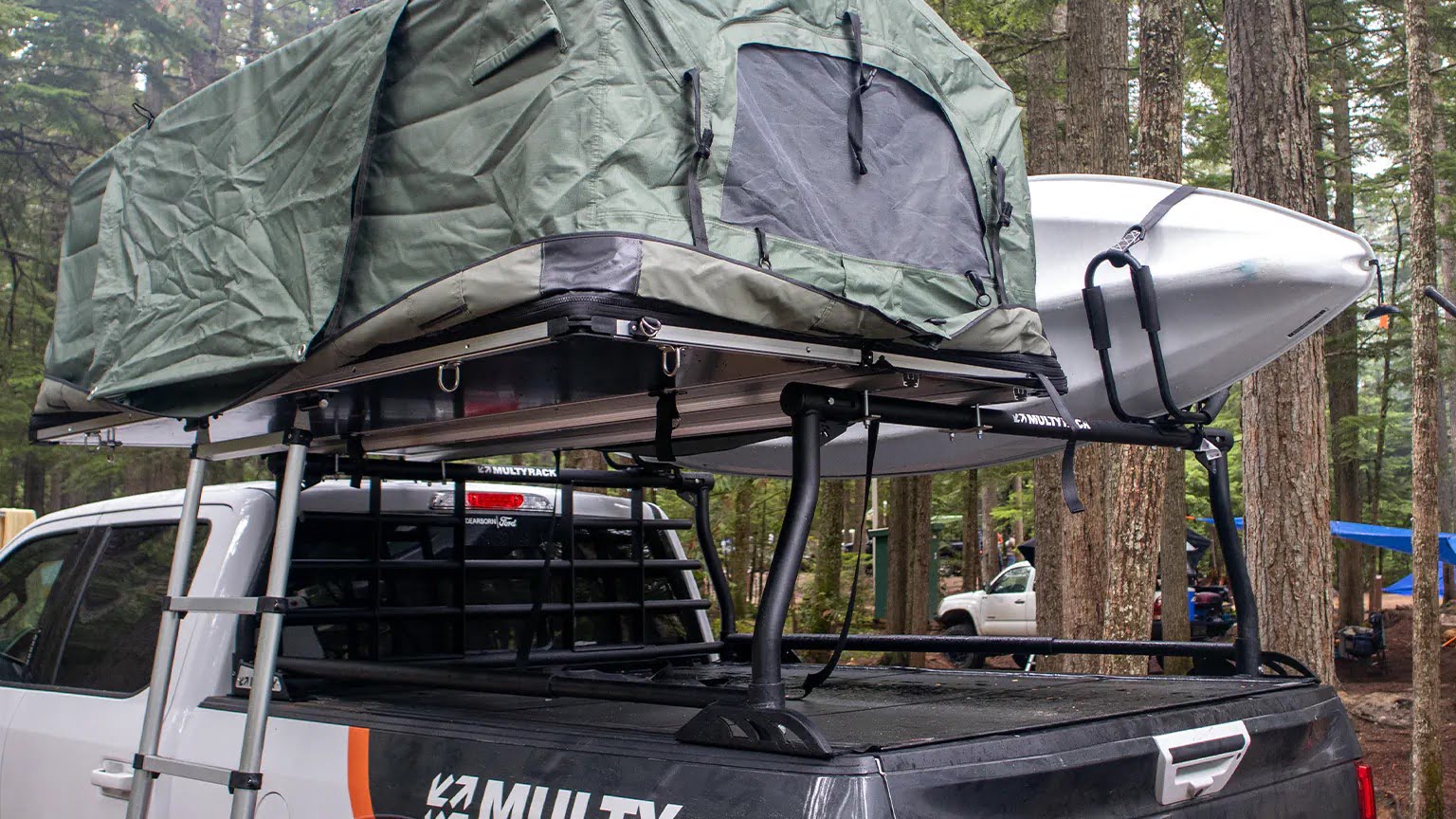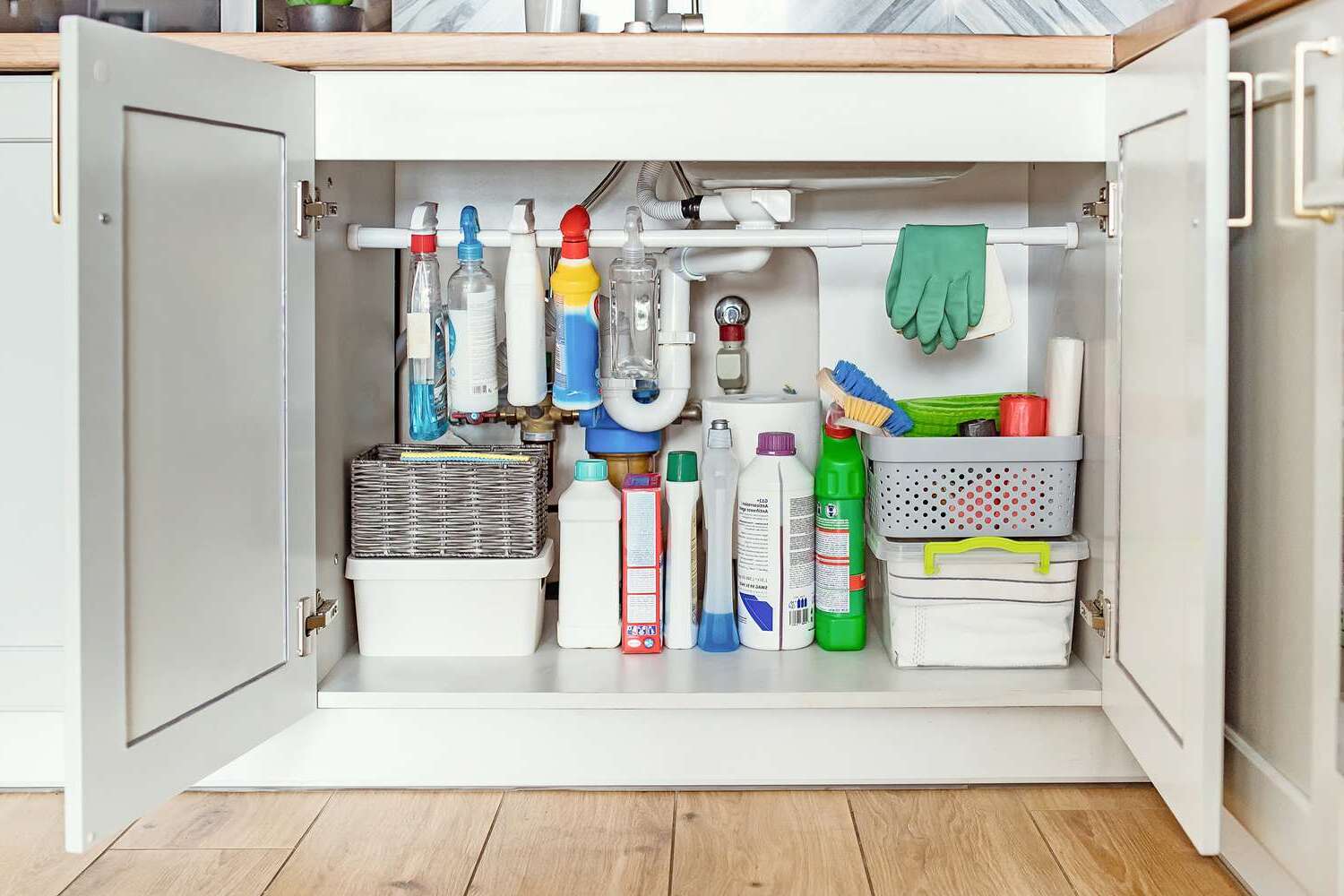Home>Create & Decorate>DIY & Crafts>DIY Food Truck: Building Your Own Mobile Kitchen
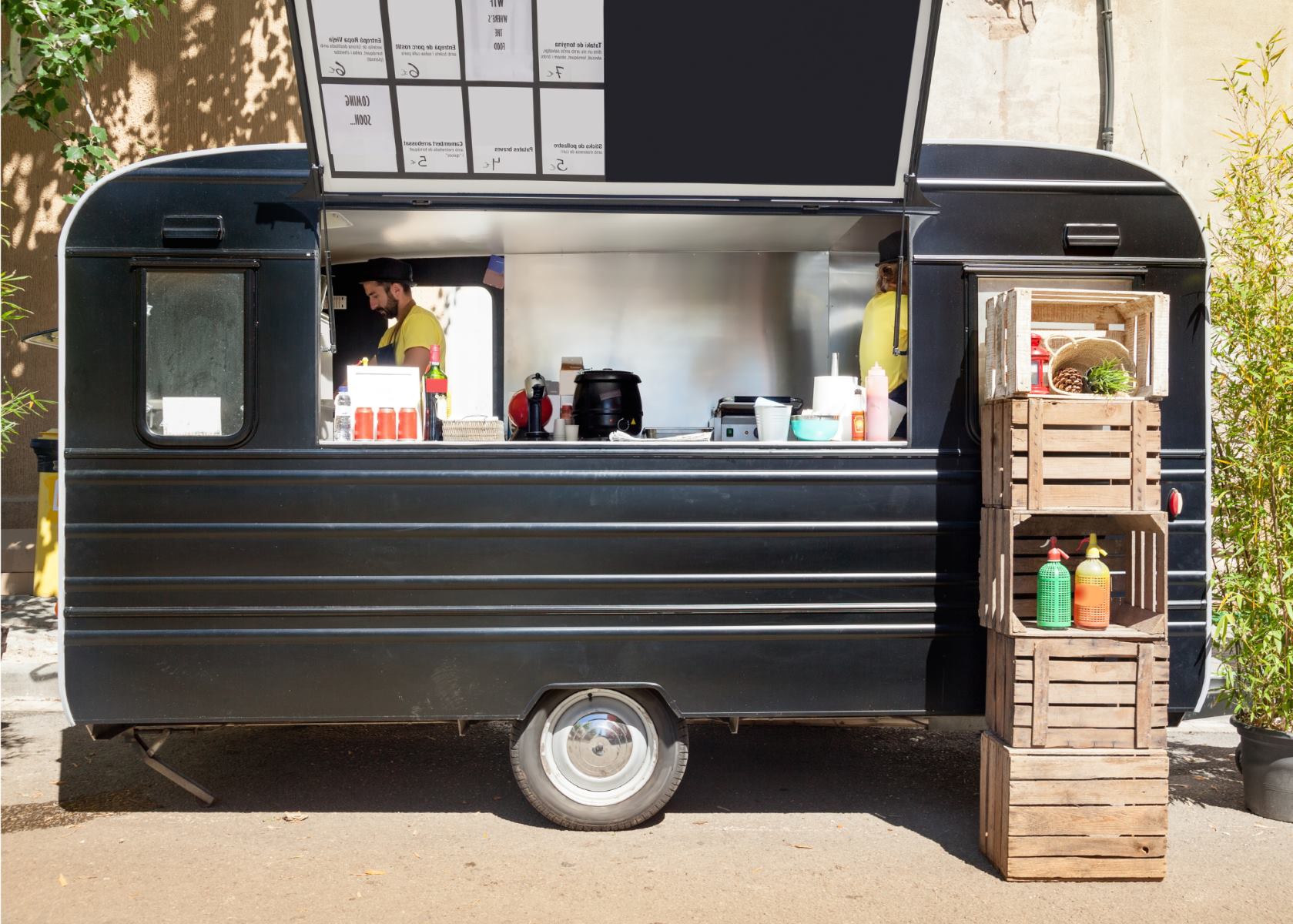

DIY & Crafts
DIY Food Truck: Building Your Own Mobile Kitchen
Published: May 31, 2024

Content Creator specializing in woodworking and interior transformations. Caegan's guides motivate readers to undertake their own projects, while his custom furniture adds a personal touch.
Discover how to create your own mobile kitchen with our DIY food truck guide. Get inspired with DIY & Crafts tips for your culinary adventure!
(Many of the links in this article redirect to a specific reviewed product. Your purchase of these products through affiliate links helps to generate commission for Twigandthistle.com, at no extra cost. Learn more)
Introduction
So, you've got a passion for cooking and a dream of sharing your culinary creations with the world. What better way to do that than by starting your own DIY food truck? Building your own mobile kitchen can be an exciting and rewarding project, but it also requires careful planning, creativity, and a lot of hard work. In this guide, we'll walk you through the essential steps to help you bring your DIY food truck vision to life. From planning and designing to sourcing materials and equipment, we've got you covered. Let's dive in and get cooking!
Planning Your DIY Food Truck
When it comes to embarking on the journey of building your own food truck, thorough planning is crucial. Here are the key steps to consider as you lay the groundwork for your DIY food truck venture:
-
Conceptualize Your Menu: Start by defining the type of cuisine you want to offer. Consider your strengths as a cook and the preferences of your target audience. Will you specialize in gourmet burgers, tacos, or perhaps vegan dishes? Your menu will influence the design and layout of your mobile kitchen.
-
Research Local Regulations: Before diving into the build, familiarize yourself with the regulations and permits required for operating a food truck in your area. This may include health and safety standards, zoning laws, and business licenses. Compliance with these regulations is essential for a successful food truck operation.
-
Create a Budget: Determine the overall budget for your DIY food truck project. This should encompass expenses such as purchasing a vehicle, kitchen equipment, permits, and marketing. Be sure to allocate funds for unexpected costs that may arise during the build.
-
Choose a Suitable Vehicle: Selecting the right vehicle for your food truck is a critical decision. Consider factors such as size, condition, and fuel efficiency. Whether it's a retrofitted van, truck, or trailer, the vehicle should align with your menu and provide adequate space for food preparation and storage.
-
Map Out Your Route: Research potential locations and events where you can park your food truck. Consider the foot traffic, local demographics, and competition in each area. Building a presence at popular festivals, markets, and office parks can greatly impact your success.
By meticulously planning each aspect of your DIY food truck, you'll set a solid foundation for the exciting journey ahead.
Designing Your Mobile Kitchen
Designing the layout of your mobile kitchen is a pivotal step in the DIY food truck building process. The goal is to create an efficient and ergonomic workspace that maximizes functionality within the limited space available. Here are essential considerations for designing your mobile kitchen:
-
Workflow Efficiency: Plan the flow of your kitchen to optimize the preparation and cooking process. Position equipment and workstations to minimize movement and maximize productivity. For instance, place the cooking appliances in close proximity to the food storage and preparation areas for seamless workflow.
-
Space Optimization: With space at a premium, every inch counts. Utilize multi-functional equipment and storage solutions to make the most of the available space. Consider foldable tables, stackable containers, and compact appliances to ensure efficient use of the kitchen area.
-
Ventilation and Safety: Adequate ventilation is crucial to maintain a comfortable and safe working environment. Install a powerful exhaust system to remove cooking odors, smoke, and excess heat from the kitchen. Additionally, prioritize safety measures such as fire extinguishers, first aid kits, and non-slip flooring to ensure a secure workspace.
-
Menu-Driven Design: Tailor the kitchen layout to accommodate the specific requirements of your menu. If your specialty is grilled items, allocate sufficient space for grills and ventilation. For a dessert-focused menu, prioritize refrigeration and preparation areas for baked goods and cold treats.
-
Branding and Aesthetics: Incorporate your brand identity into the design of the mobile kitchen. Use eye-catching signage, colors, and graphics that reflect the theme of your cuisine. A visually appealing food truck not only attracts customers but also reinforces brand recognition.
-
Compliance with Regulations: Ensure that the kitchen design adheres to health and safety regulations. This may include the installation of handwashing stations, proper waste disposal systems, and food storage practices that meet sanitation standards.
By carefully considering these factors, you can create a well-designed mobile kitchen that not only meets operational needs but also enhances the overall dining experience for your customers.
Sourcing Materials and Equipment
Sourcing the right materials and equipment is a critical phase in the construction of your DIY food truck. The quality and functionality of the components you choose will directly impact the performance and longevity of your mobile kitchen. Here's a comprehensive guide to help you navigate the process of acquiring the essential materials and equipment for your food truck build:
1. Kitchen Equipment
Invest in high-quality kitchen appliances and tools that align with your menu and cooking requirements. Consider the following equipment:
- Cooking Appliances: Depending on your menu, you may need grills, fryers, ovens, or specialized cooking equipment. Opt for energy-efficient models that can withstand the demands of a mobile kitchen.
- Refrigeration: Choose reliable refrigeration units to store perishable ingredients and prepared food. Look for compact yet spacious refrigerators and freezers that can maintain consistent temperatures.
- Food Preparation Tools: Stock up on cutting boards, knives, mixing bowls, and other essential tools for food preparation. Ensure that the equipment is durable and easy to clean.
2. Interior Materials
Selecting the right materials for the interior of your food truck is crucial for both functionality and aesthetics. Consider the following aspects:
- Flooring: Choose non-slip, easy-to-clean flooring materials that can withstand heavy foot traffic and spills. Options such as commercial-grade vinyl or rubber flooring are popular choices for food truck interiors.
- Countertops and Surfaces: Opt for durable, food-safe materials for your countertops and work surfaces. Stainless steel is a common choice due to its durability, resistance to corrosion, and ease of maintenance.
- Storage Solutions: Invest in shelving, cabinets, and storage containers that maximize space and keep your kitchen organized. Utilize vertical space to optimize storage without compromising the kitchen's functionality.
3. Exterior Components
The exterior of your food truck is equally important, as it serves as the first point of contact with your customers. Consider the following exterior components:
- Awning or Canopy: Install a retractable awning or canopy to provide shade for customers and protect them from the elements while they place their orders.
- Exterior Signage: Design and install eye-catching signage that showcases your brand and menu. Ensure that the signage is visible and effectively communicates your offerings to potential customers.
- Service Windows: Choose sturdy and secure service windows that facilitate efficient order taking and food service. Consider the size and placement of the windows to streamline customer interactions.
4. Custom Fabrication
In some cases, custom fabrication may be necessary to create specialized components for your food truck. This could include custom-built stainless steel countertops, storage racks, or ventilation systems tailored to the unique layout of your mobile kitchen. Work with experienced fabricators who understand the specific requirements of food truck construction.
5. Supplier Research
Research reputable suppliers and manufacturers for the materials and equipment you need. Look for suppliers who specialize in outfitting food trucks and commercial kitchens, as they can provide valuable expertise and tailored solutions for your project. Consider factors such as product quality, warranty, and after-sales support when choosing suppliers.
By carefully sourcing the right materials and equipment, you can ensure that your DIY food truck is equipped with the necessary components to deliver top-notch culinary creations while meeting safety and regulatory standards.
Read more: How to Build a DIY Pass Through Window
Building Your Food Truck
Building your food truck is where your vision truly takes shape. From transforming the vehicle into a functional kitchen to adding custom touches that reflect your brand, this phase is both challenging and immensely rewarding. Here's a detailed breakdown of the essential steps involved in constructing your DIY food truck:
1. Vehicle Preparation
Before diving into the kitchen build, the vehicle itself requires careful preparation. This may involve mechanical inspections, repairs, and aesthetic enhancements to ensure that the truck is roadworthy and visually appealing. Consider tasks such as engine maintenance, exterior cleaning, and any necessary modifications to the vehicle's structure to accommodate the kitchen layout.
2. Kitchen Installation
The heart of your food truck is the kitchen, where the magic of cooking happens. This phase involves installing cooking equipment, refrigeration units, storage compartments, and other essential fixtures. Ensure that all equipment is securely anchored and that gas, electrical, and plumbing systems are professionally installed to meet safety standards.
3. Customization and Branding
Infuse your food truck with personality and style through custom touches and branding elements. This could include custom cabinetry, decorative lighting, menu boards, and vibrant decals that showcase your logo and menu items. The goal is to create a visually appealing and cohesive aesthetic that captures the essence of your culinary concept.
4. Electrical and Plumbing
The installation of electrical and plumbing systems is a critical aspect of the build. Work with qualified professionals to ensure that the wiring, outlets, lighting, and plumbing fixtures are installed to code. Proper insulation and waterproofing are essential to safeguard these systems from the rigors of the mobile kitchen environment.
5. Safety Considerations
Prioritize safety features throughout the construction process. This includes installing fire suppression systems, emergency exits, and safety signage. Additionally, ensure that all equipment is secured to prevent movement during transit and that gas lines and electrical connections are properly sealed and protected.
6. Test Runs and Adjustments
Once the initial construction is complete, conduct thorough test runs to identify any operational issues or design flaws. This is an opportunity to fine-tune the layout, equipment placement, and workflow to optimize efficiency and functionality. Make any necessary adjustments based on the insights gained from these test runs.
7. Quality Assurance and Compliance
Before hitting the road, undergo a comprehensive quality assurance process to verify that all systems are functioning as intended. This includes conducting safety inspections, verifying compliance with health regulations, and obtaining the necessary permits and certifications required for operating a food truck.
By meticulously following these steps, you can transform a standard vehicle into a fully functional and visually captivating food truck that brings your culinary vision to life. Each phase of the build contributes to the creation of a mobile kitchen that not only delights customers with delicious fare but also reflects your unique brand identity.
Read more: How to Create a DIY Kitchen Garden
Safety and Health Regulations
Ensuring compliance with safety and health regulations is paramount when operating a food truck. The mobile nature of the kitchen presents unique challenges that require meticulous attention to detail to maintain a safe and hygienic environment for both food preparation and service. Here's a comprehensive overview of the safety and health regulations that must be addressed when building and operating your DIY food truck:
-
Food Handling and Storage: Adhering to proper food handling and storage practices is essential to prevent contamination and foodborne illnesses. Implement strict protocols for storing perishable ingredients at safe temperatures, avoiding cross-contamination, and maintaining hygiene during food preparation.
-
Sanitation Standards: The cleanliness of your mobile kitchen directly impacts the safety of the food you serve. Develop a rigorous cleaning schedule for all kitchen surfaces, equipment, and utensils. Additionally, establish procedures for waste disposal and maintaining a sanitary environment within the food truck.
-
Fire Safety: Mitigating fire hazards is critical in a confined space such as a food truck. Install fire suppression systems, such as automatic fire extinguishers and fire blankets, to swiftly address potential kitchen fires. Conduct regular inspections and maintenance of these systems to ensure their effectiveness.
-
Ventilation and Air Quality: Proper ventilation is crucial to remove cooking fumes, heat, and airborne particles from the kitchen. Install a robust ventilation system that meets safety standards and effectively expels cooking odors and smoke. This not only enhances air quality within the food truck but also creates a comfortable working environment for the kitchen staff.
-
Employee Health and Hygiene: Establish clear guidelines for employee health and hygiene, including requirements for handwashing, personal protective equipment, and illness reporting. Educate your staff on the importance of maintaining personal hygiene to prevent the spread of foodborne illnesses.
-
Vehicle Maintenance and Safety: Regular maintenance of the food truck's mechanical and electrical systems is essential to ensure safe operation on the road. This includes routine inspections of the vehicle's engine, brakes, tires, and lighting to prevent potential safety hazards while in transit.
-
Regulatory Compliance: Familiarize yourself with the specific health and safety regulations governing food trucks in your operating area. This may include obtaining permits, licenses, and certifications related to food handling, fire safety, and overall operational compliance. Stay updated on any changes to regulations to ensure ongoing adherence.
-
Training and Education: Provide comprehensive training to your staff on food safety practices, emergency procedures, and compliance with health regulations. Regularly review and reinforce these protocols to maintain a culture of safety and responsibility within your food truck operation.
By prioritizing safety and health regulations throughout the construction and operation of your DIY food truck, you not only safeguard the well-being of your customers and staff but also build a reputation for excellence in food quality and safety standards. Compliance with these regulations is a fundamental aspect of running a successful and responsible food truck business.
Marketing and Operating Your DIY Food Truck
Successfully marketing and operating your DIY food truck involves a combination of strategic promotion, efficient logistics, and exceptional customer service. Here's a comprehensive guide to help you navigate the realms of marketing and operations in the competitive world of mobile food service:
1. Branding and Promotion
Establishing a strong brand identity and effectively promoting your food truck is essential for attracting and retaining customers. Consider the following strategies:
-
Branding Elements: Develop a compelling brand identity that reflects the unique personality of your food truck. This includes creating a memorable logo, cohesive color schemes, and engaging signage that captures the essence of your culinary concept.
-
Online Presence: Leverage social media platforms and a dedicated website to showcase your menu, schedule, and engaging content. Utilize platforms such as Instagram, Facebook, and Twitter to share mouth-watering photos of your dishes, announce upcoming locations, and engage with your audience.
-
Community Engagement: Participate in local events, food festivals, and community gatherings to introduce your food truck to a wider audience. Collaborate with other businesses and organizations to host special events and promotions that generate buzz and attract new customers.
2. Operational Logistics
Efficiently managing the day-to-day operations of your food truck is crucial for delivering a seamless and enjoyable dining experience. Consider the following operational aspects:
-
Route Planning: Develop a well-thought-out schedule and route plan that maximizes your presence in high-traffic areas, popular events, and office districts. Utilize location-based data and customer feedback to optimize your schedule and identify lucrative opportunities.
-
Inventory Management: Implement a robust inventory management system to track ingredient usage, minimize waste, and ensure that you have the necessary supplies for each service. Utilize technology such as point-of-sale systems and mobile apps to streamline inventory tracking and ordering processes.
-
Customer Service: Prioritize exceptional customer service to build a loyal customer base. Train your staff to deliver friendly and efficient service, handle customer inquiries, and address any concerns promptly. Positive interactions with customers can lead to repeat business and positive word-of-mouth referrals.
3. Menu Innovation and Specials
Continuously evolving your menu and offering enticing specials can keep customers excited and coming back for more. Consider the following strategies:
-
Seasonal Offerings: Introduce seasonal menu items and limited-time specials that capitalize on fresh, in-season ingredients and align with seasonal culinary trends. This creates a sense of anticipation and encourages repeat visits.
-
Customer Feedback: Solicit feedback from your customers to understand their preferences and gather ideas for new menu items. Engage with your audience through surveys, social media polls, and in-person interactions to gather valuable insights.
-
Collaborations and Partnerships: Explore collaborations with local suppliers, breweries, or other food businesses to create unique menu items or joint promotions. This not only expands your menu offerings but also introduces your food truck to new audiences through cross-promotion.
4. Regulatory Compliance and Safety
Maintaining compliance with health and safety regulations is a non-negotiable aspect of operating a food truck. Ensure that you stay up to date with regulations and prioritize the following:
-
Regular Inspections: Schedule routine inspections of your food truck to ensure compliance with health codes, fire safety standards, and vehicle maintenance requirements. Address any issues promptly to maintain a safe and legally compliant operation.
-
Staff Training: Provide comprehensive training to your staff on food safety practices, emergency procedures, and compliance with health regulations. Regularly review and reinforce these protocols to maintain a culture of safety and responsibility within your food truck operation.
-
Permit Renewal: Stay vigilant about the renewal of permits, licenses, and certifications related to food handling, fire safety, and overall operational compliance. Maintain meticulous records and calendars to ensure that all regulatory obligations are met on time.
By implementing these strategies, you can effectively market and operate your DIY food truck, creating a memorable and enjoyable experience for your customers while building a successful and sustainable mobile food business.
Conclusion
Embarking on the journey of building your own DIY food truck is a thrilling endeavor that combines culinary passion with entrepreneurial spirit. From meticulous planning and innovative design to sourcing materials, constructing the kitchen, and navigating safety and regulatory considerations, the process is a labor of love. As you venture into the realm of marketing and operations, the opportunity to engage with customers, showcase your culinary creations, and build a loyal following awaits.
By embracing the challenges and opportunities that come with DIY food truck ownership, you not only bring your culinary vision to life but also contribute to the vibrant tapestry of mobile dining experiences. The road ahead may present its share of twists and turns, but with dedication, creativity, and a commitment to excellence, your DIY food truck has the potential to become a beloved fixture in the local culinary landscape.
As you set out on this exciting journey, remember that the heart of your food truck lies not only in the delicious dishes you serve but also in the unique experience you create for your customers. Whether it's a sizzling grill, the aroma of freshly baked treats, or the warm smiles of satisfied patrons, your DIY food truck has the power to leave a lasting impression and carve out its own place in the world of mobile gastronomy. So, roll up your sleeves, fire up the burners, and let the adventure of DIY food truck ownership begin.

